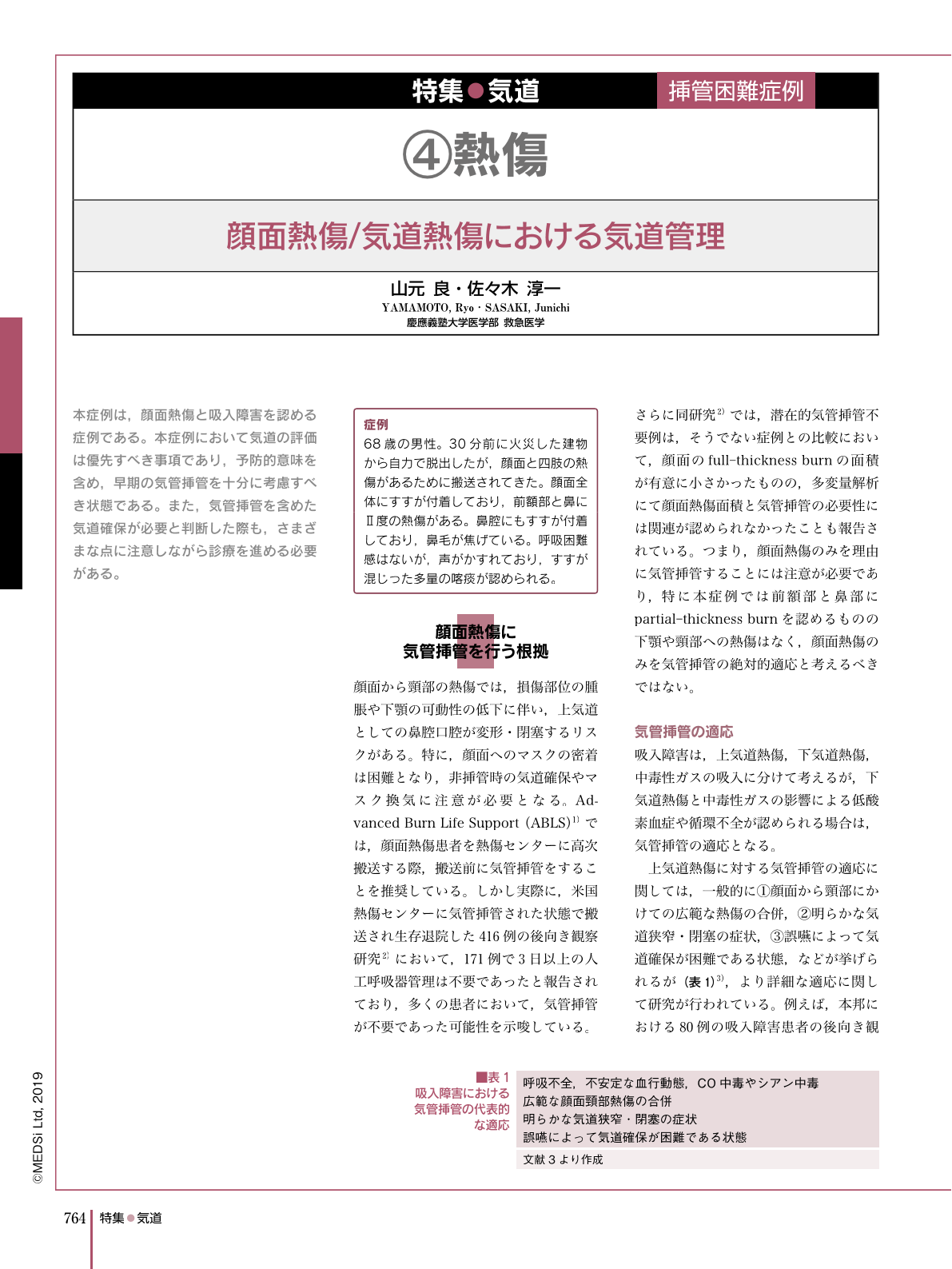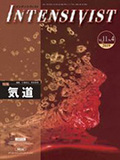Japanese
English
- 有料閲覧
- Abstract 文献概要
- 1ページ目 Look Inside
- 参考文献 Reference
本症例は,顔面熱傷と吸入障害を認める症例である。本症例において気道の評価は優先すべき事項であり,予防的意味を含め,早期の気管挿管を十分に考慮すべき状態である。また,気管挿管を含めた気道確保が必要と判断した際も,さまざまな点に注意しながら診療を進める必要がある。
Patients with facial burns or inhalation injuries require meticulous assessment of the airway which must be secured primarily. Since patients with signs of obvious or impending airway obstruction require early and even prophylactic intubation, physicians need to understand the indications and technique for endotracheal intubation. Several studies describing the indications for the intubation of burn patients showed that many patients with isolated facial burns may have undergone unnecessary intubation for the burns that were not extensive. Inhalation injuries are not clinically diagnosed only by the presence of nasal soot or singed nasal hair. Traditional signs of these injuries, such as hoarseness and dysphasia, were not associated with the need for intubation. Fiberoptic bronchoscopy allows direct visualization of the extent of upper airway injuries, which might provide additional information in making the decision to intubate. Fiberoptic intubation was effective when swelling and distortion of the face and neck after a burn made direct laryngoscopy difficult or impossible. A laryngeal mask airway (LMA) is a supraglottic device that has been used successfully in burn surgery and can be used as a backup for intubation, although subglottic obstruction due to inhalation injury excludes this option. Emergency cricothyroidotomy should be considered as another alternative, unless it is impossible to correctly identify the cricoid cartilage due to full-thickness burns over the neck.

Copyright © 2019, MEDICAL SCIENCES INTERNATIONAL, LTD. All rights reserved.


